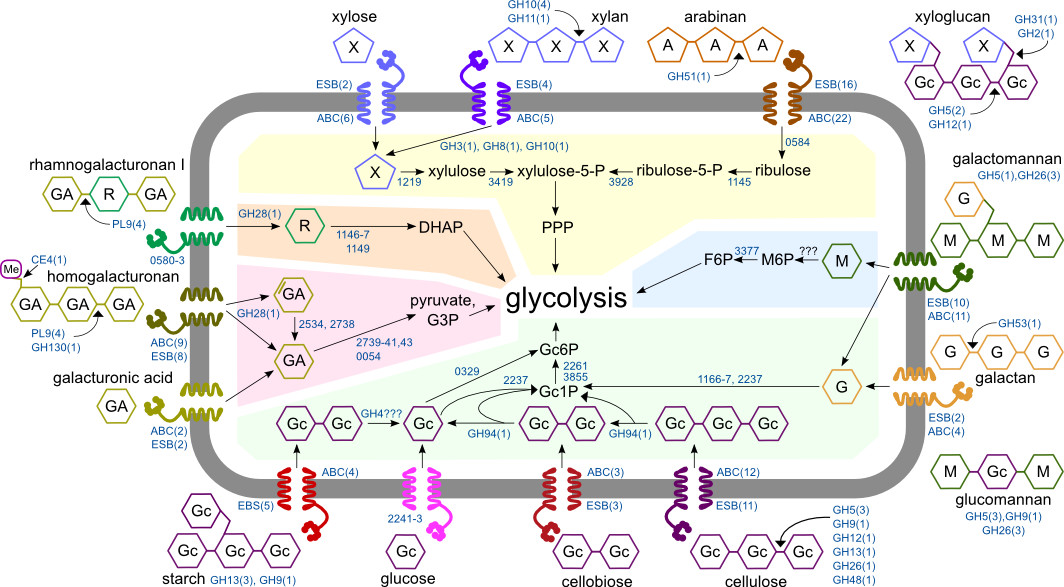The majority of plant biomass, non-consumable by humans, consists of lignin and polysaccharides such as cellulose. However, fermenting microorganisms in the soil, the sea, or the intestines of certain animals can degrade this biomass1. To improve the industrial use of this resource2, it is essential to understand how these microorganisms depolymerize and metabolize polysaccharides, in particular which enzyme combinations are involved. A team from the CEA-Genoscope has developed a generic method to study the catabolism3 of biomass, which was then applied to Clostridium phytofermentans. Recently isolated from forest soil, this bacterium converts plant debris into ethanol and hydrogen.
The method combines three approaches. Researchers first cultivate microorganisms on different types of polysaccharides and measure their growth in these conditions. They also sequence their RNA to determine which genes (and thus which enzymes) are overexpressed in the presence of a particular polysaccharide. Finally, after purification, they characterize the activity of these enzymes in vitro. The team has thus purified 56 enzymes from Clostridium phytofermentans and clarified the role of 32 of them in the degradation of biomass.

A model of metabolism has thus been built for this bacterium, which especially shows that the degradation of a polysaccharide often requires the combined action of several enzymes. These results will facilitate the subsequent engineering of enzyme mixtures or even modified microbes for the industrial production of biofuels or other molecules of interest from plant biomass.
1 This is a key step in the carbon cycle.
2 Today, only 2% of cellulosic biomass is used for industrial purposes.
3 Catabolism (degradation reactions) and anabolism (synthesis reactions) are the two components of metabolism.